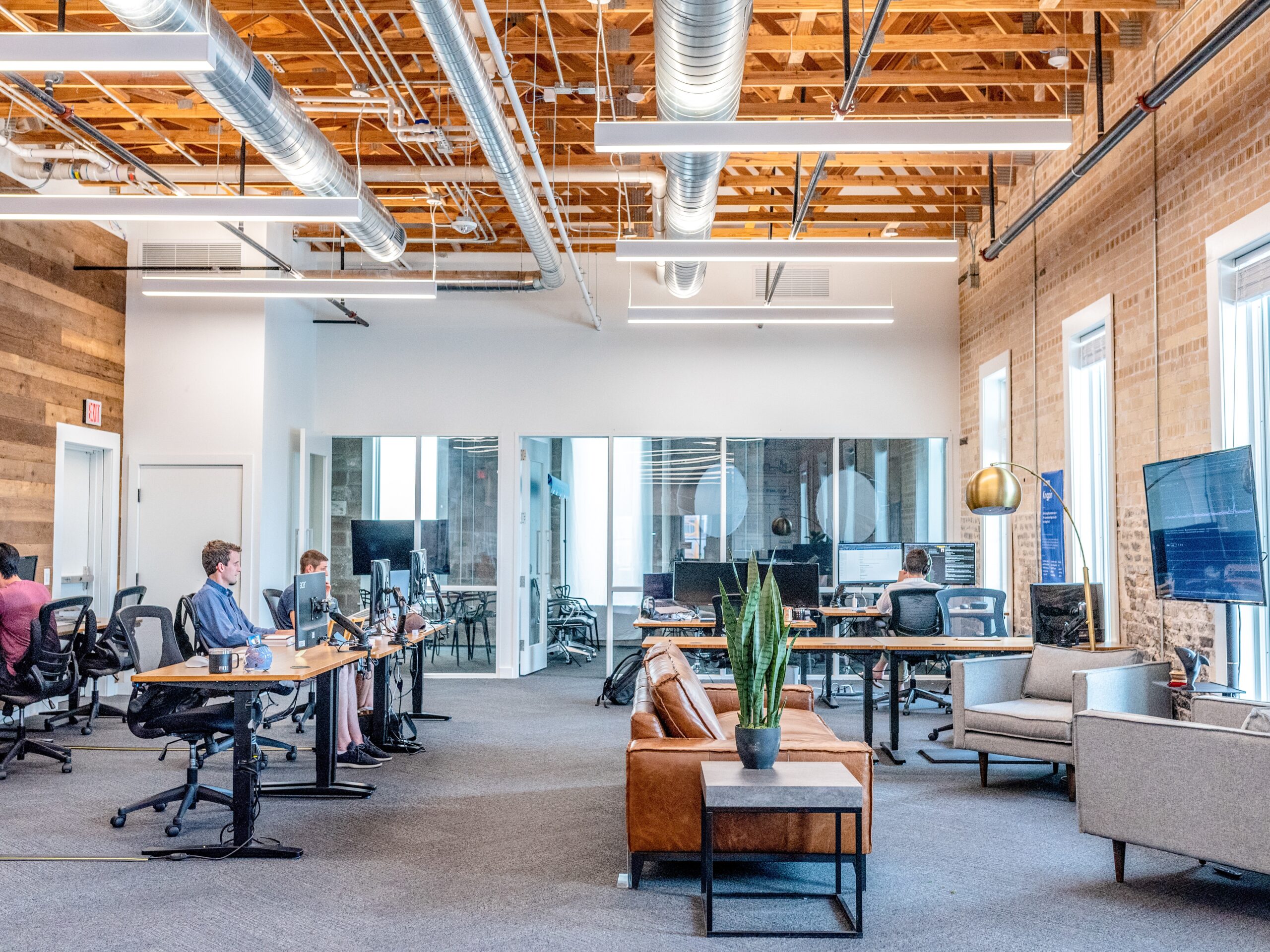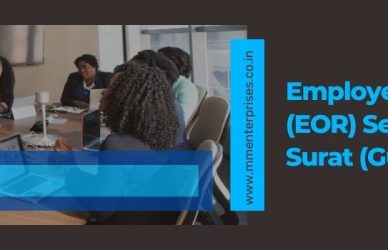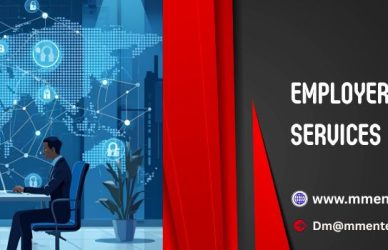Introduction: The Need for HR Reforms in 2025
The business world is evolving rapidly, and HR reforms are essential to keep pace with these changes. As organizations navigate the post-pandemic workforce landscape, the role of Human Resources (HR) has become more critical than ever. HR reforms in 2025 aim to address workforce diversity, digital transformation, compliance, and employee well-being to create a sustainable and inclusive work environment.
Adapting to Remote and Hybrid Work Models
The shift towards remote and hybrid work has redefined workforce management. HR departments must establish policies that balance flexibility with productivity while ensuring a cohesive corporate culture. Companies are adopting digital collaboration tools, redefining performance evaluation metrics, and emphasizing employee engagement strategies to maintain a connected and motivated workforce.
Embracing Digital Transformation and Automation
The integration of artificial intelligence (AI) and automation in HR processes is revolutionizing talent acquisition, onboarding, and performance management. AI-driven analytics help HR professionals make data-driven decisions, improve employee experience, and streamline administrative tasks. Automation in payroll, benefits administration, and compliance tracking ensures efficiency and accuracy while reducing manual workload.
Strengthening Workforce Diversity and Inclusion
Diversity, equity, and inclusion (DEI) have become central to HR policies in 2025. Organizations are implementing bias-free recruitment strategies, inclusive workplace training, and mentorship programs to create equitable opportunities for all employees. HR leaders are also leveraging data analytics to measure DEI progress and drive meaningful change in workplace culture.
Enhancing Employee Well-being and Compliance
Employee well-being is a top priority, with organizations investing in mental health programs, wellness benefits, and flexible work arrangements. Compliance regulations continue to evolve, requiring HR teams to stay updated on labor laws, workplace safety guidelines, and data privacy standards. Strengthening compliance measures ensures legal adherence while fostering a secure work environment.

Key Drivers of HR Reforms in 2025
HR reforms in 2025 are being shaped by several key factors that influence workforce management, employee expectations, and business operations. From technological advancements to shifting workforce demographics, companies must adapt to stay competitive and compliant in a rapidly evolving business environment.
Technological Advancements
HR technology is evolving at a rapid pace, enabling companies to automate processes, leverage AI-driven analytics, and streamline recruitment and employee management. AI-powered applicant tracking systems (ATS) and machine learning algorithms are transforming the hiring process by identifying top candidates based on skills, experience, and cultural fit.
Additionally, AI-driven analytics help HR professionals predict workforce trends, measure employee engagement, and improve retention strategies. Automation in payroll processing, benefits administration, and compliance tracking reduces manual workload, allowing HR teams to focus on strategic initiatives. Cloud-based HR management systems (HRMS) provide seamless access to employee data, enhancing decision-making and operational efficiency.
Changing Workforce Dynamics
With Generation Z entering the workforce and millennials stepping into leadership roles, HR policies must accommodate diverse expectations and work styles. Gen Z employees prioritize work-life balance, purpose-driven careers, and continuous learning opportunities. Millennials, now in management positions, emphasize flexibility, collaboration, and digital integration in the workplace.
HR leaders must design employee-centric policies that address these evolving preferences. This includes offering personalized career development plans, fostering a culture of mentorship, and providing mental health and well-being programs. Companies that align their HR strategies with employee expectations will attract and retain top talent in a competitive job market.
Remote and Hybrid Work Models
The widespread adoption of remote and hybrid work has transformed traditional workplace structures. Companies must balance in-office and remote work arrangements while ensuring productivity, collaboration, and employee satisfaction.
To achieve this, HR departments are implementing digital collaboration tools, redefining performance evaluation metrics, and enhancing communication strategies. Virtual team-building activities, regular check-ins, and flexible work policies contribute to employee engagement and retention.
Moreover, organizations must address cybersecurity concerns and data privacy challenges associated with remote work. Establishing secure digital infrastructure and providing cybersecurity training ensures a safe and efficient virtual work environment.
Regulatory and Compliance Changes
Governments worldwide are introducing new labor laws and workplace policies, requiring HR teams to stay updated and compliant. Changes in data privacy regulations, wage transparency laws, and employee rights mandates demand continuous monitoring and adaptation of HR policies.
HR professionals must implement robust compliance frameworks, conduct regular audits, and leverage compliance management software to ensure adherence to evolving regulations. Companies operating across multiple jurisdictions must also navigate global labor laws, taxation policies, and cross-border employment requirements.
Additionally, workplace diversity and inclusion regulations are gaining prominence, requiring businesses to implement fair hiring practices, pay equity policies, and anti-discrimination measures. Proactive compliance with these regulations not only reduces legal risks but also strengthens employer reputation and trust among employees.

Digital Transformation in HR: The Role of AI and Automation
The integration of artificial intelligence (AI) and automation in human resource management is reshaping the way organizations attract, manage, and retain talent. AI-driven tools and automation technologies are streamlining HR functions, reducing manual tasks, and enabling data-driven decision-making. As businesses increasingly adopt digital transformation strategies, HR departments are leveraging advanced technologies to enhance efficiency, accuracy, and employee experience.
AI in Recruitment and Onboarding
AI-powered recruitment tools are revolutionizing the hiring process by automating candidate screening, skill assessments, and interview scheduling. AI-driven applicant tracking systems (ATS) analyze resumes, match candidates based on predefined criteria, and provide hiring recommendations, reducing human bias and improving the accuracy of talent acquisition.
Predictive analytics further enhances hiring accuracy by assessing historical hiring data and forecasting candidate success rates. These insights enable HR professionals to make more informed decisions, leading to better workforce planning and talent retention.
In onboarding, AI-driven chatbots guide new hires through the onboarding process, answering FAQs, scheduling training sessions, and providing personalized resources. Automation ensures a seamless onboarding experience, reducing paperwork and administrative burdens while improving employee engagement from day one.
Enhancing Employee Engagement with AI
AI-driven employee engagement tools play a crucial role in fostering a connected and motivated workforce. AI-powered chatbots and virtual assistants facilitate real-time communication, allowing employees to access HR support, request leave, or receive company updates instantly.
Sentiment analysis tools analyze employee feedback, survey responses, and workplace interactions to measure engagement levels and identify potential areas of concern. By leveraging AI insights, HR teams can implement proactive strategies to improve employee satisfaction, reduce turnover, and enhance workplace culture.
Additionally, AI-driven learning management systems (LMS) offer personalized training and development programs tailored to individual employee needs. These platforms use machine learning algorithms to recommend relevant courses, track progress, and enhance skill development, promoting continuous learning and career growth.
Automation in Performance Management
Performance management is undergoing a transformation with AI-powered tools that provide real-time feedback, track key performance indicators (KPIs), and automate performance reviews. Traditional annual reviews are being replaced by continuous feedback mechanisms, where AI-driven analytics assess employee productivity and suggest improvement strategies.
Automated goal-setting platforms help managers and employees align objectives, monitor progress, and adjust performance targets based on real-time data. This ensures a more dynamic and results-driven performance management system, fostering accountability and professional development.
Integration of HR Tech Platforms
Modern HR technology platforms integrate seamlessly with business operations, reducing administrative burdens and improving efficiency. Cloud-based HR management systems (HRMS) centralize employee data, automate payroll processing, and manage benefits administration with minimal manual intervention.
AI-powered workforce analytics tools provide HR leaders with actionable insights on employee turnover, productivity trends, and workforce planning strategies. These insights enable data-driven decision-making, helping organizations optimize workforce allocation and improve overall HR efficiency.
As businesses continue to embrace digital transformation, the role of AI and automation in HR will expand further, creating more agile, efficient, and employee-centric workplaces.

Diversity, Equity, and Inclusion (DEI) in HR Reforms
As workplaces evolve, Diversity, Equity, and Inclusion (DEI) have become fundamental pillars of HR reforms in 2025. Organizations are prioritizing DEI initiatives to foster an inclusive and fair work environment where all employees have equal opportunities to thrive. HR strategies now focus on eliminating biases in hiring, promoting equitable pay structures, and implementing policies that support underrepresented groups.
Eliminating Biases in Hiring
A key focus of HR reforms is ensuring fair and unbiased recruitment practices. Many companies are leveraging AI-driven applicant tracking systems (ATS) to assess hiring patterns and identify any unconscious biases in recruitment decisions. By analyzing candidate data without human prejudices, AI helps create a more diverse talent pipeline.
Blind hiring practices, where candidates’ personal details such as name, gender, and ethnicity are hidden during the initial screening process, are also gaining popularity. These measures ensure that hiring decisions are based solely on skills, qualifications, and experience, promoting equal opportunities for all candidates.
Promoting Equitable Pay Structures
Pay equity remains a significant aspect of DEI-focused HR reforms. Organizations are conducting pay audits to identify and eliminate wage disparities based on gender, race, or other demographic factors. Transparent salary structures and standardized compensation frameworks help ensure fair pay for equal work.
Additionally, new HR policies emphasize salary negotiations that consider market benchmarks and internal parity, preventing pay gaps from widening over time. Companies that implement equitable pay practices not only comply with evolving labor regulations but also enhance employee trust and organizational reputation.
Supporting Underrepresented Groups
Creating an inclusive workplace involves actively supporting underrepresented groups, including women, racial minorities, LGBTQ+ employees, and people with disabilities. HR reforms are introducing targeted mentorship programs, leadership training initiatives, and upskilling opportunities to bridge representation gaps.
Employee Resource Groups (ERGs) play a crucial role in fostering inclusivity by providing a platform for employees to share experiences, network, and advocate for necessary workplace changes. Companies that encourage ERGs see increased engagement, better retention rates, and a stronger sense of belonging among employees.
Leveraging AI and Analytics for DEI
HR departments are using AI-powered analytics to measure DEI progress and drive meaningful change. Data-driven insights help organizations track hiring trends, pay disparities, promotion rates, and employee engagement levels across diverse groups. These insights enable HR teams to refine their strategies, address gaps, and ensure continuous improvement in DEI efforts.
Sentiment analysis tools also help HR professionals gauge employee perceptions of inclusivity, workplace culture, and leadership effectiveness. By identifying concerns early, companies can proactively implement solutions to create a more equitable work environment.
Cultivating an Inclusive Workplace Culture
Beyond policies and analytics, fostering an inclusive workplace culture is essential for the success of DEI initiatives. Companies are conducting DEI training programs, promoting open dialogues on workplace biases, and ensuring diverse representation in leadership roles.
Inclusive HR policies, such as flexible work arrangements, religious accommodations, and parental leave benefits, further reinforce a culture of belonging. Organizations that prioritize DEI not only enhance employee satisfaction but also drive innovation and business success in the long run.

Employee Experience and Well-being: A Core HR Focus
In 2025, employee experience and well-being have emerged as top priorities in HR reforms. Organizations recognize that a satisfied, healthy workforce leads to higher productivity, stronger engagement, and better retention rates. To support their employees, companies are investing in comprehensive well-being initiatives, mental health programs, and flexible work arrangements.
Prioritizing Mental Health and Emotional Well-being
Mental health is no longer an overlooked aspect of HR policies. Companies are implementing structured mental health programs that provide access to therapy, counseling, and stress management resources. Employee Assistance Programs (EAPs) offer confidential support services, helping employees navigate personal and professional challenges.
HR teams are also fostering a culture of psychological safety, where employees feel comfortable discussing mental health concerns without fear of stigma. Regular check-ins, mindfulness workshops, and wellness days are becoming common strategies to promote emotional well-being.
Flexible Work Arrangements for Better Work-Life Balance
The demand for flexible work schedules has increased as employees seek a better balance between their professional and personal lives. In response, HR reforms are integrating hybrid work models, compressed workweeks, and remote work options to cater to diverse employee needs.
By allowing employees to choose where and when they work, organizations enhance job satisfaction and reduce burnout. HR policies now focus on outcome-based performance assessments, ensuring employees are evaluated on their productivity and results rather than just hours spent in the office.
Wellness Initiatives to Enhance Employee Health
Beyond mental health, HR teams are prioritizing physical and financial well-being through a variety of wellness programs. These initiatives include:
Fitness and wellness perks – Gym memberships, on-site fitness centers, virtual workout sessions, and nutrition counseling.
Health screenings and preventive care – Annual check-ups, biometric screenings, and vaccination drives to ensure employee health.
Financial wellness programs – Retirement planning assistance, debt management counseling, and financial literacy workshops to alleviate monetary stress.
By taking a holistic approach to employee wellness, organizations foster a healthier and more engaged workforce.
Leveraging Employee Experience Platforms
HR teams are increasingly using employee experience platforms (EXPs) to gather insights into job satisfaction, engagement, and work-life balance. These platforms utilize AI-powered sentiment analysis to measure employee mood, track feedback, and identify areas for improvement.
Pulse surveys and real-time feedback tools enable HR teams to take proactive steps in addressing concerns and enhancing workplace experiences. By using data-driven insights, organizations can tailor their strategies to better support employees and improve overall satisfaction.
The Link Between Well-being and Employee Retention
Companies that invest in employee well-being programs report higher retention rates, reduced absenteeism, and improved overall performance. When employees feel valued and supported, they are more likely to stay loyal to the organization.
By prioritizing well-being and experience-driven HR policies, businesses can create a positive work environment that attracts top talent and fosters long-term success.

Reskilling and Upskilling: The Future of Workforce Development
The rapid adoption of automation and artificial intelligence (AI) is transforming industries, making continuous learning an essential part of workforce development. As technology evolves, traditional job roles are changing, and new skill sets are in demand. HR reforms in 2025 prioritize upskilling and reskilling initiatives to ensure employees remain relevant in the workforce. By fostering a culture of lifelong learning, organizations can enhance employee career growth, improve productivity, and maintain a competitive edge.
The Importance of Reskilling and Upskilling
As businesses embrace digital transformation, many job roles are being automated, requiring employees to adapt to new technologies and responsibilities. Reskilling involves training employees for entirely new roles, while upskilling focuses on enhancing existing skills to meet evolving job requirements.
Organizations that invest in reskilling and upskilling benefit from:
Increased workforce agility – Employees can transition into emerging roles with ease.
Higher employee retention – Workers are more likely to stay when offered career development opportunities.
Enhanced productivity – Skilled employees contribute more effectively to business growth.
Leveraging Learning Management Systems (LMS)
HR teams are implementing Learning Management Systems (LMS) to provide employees with easy access to training resources. These digital platforms offer personalized learning experiences, allowing employees to acquire job-specific skills at their own pace. Features of LMS include:
- AI-powered course recommendations based on employee career goals and industry trends.
- Interactive training modules such as video tutorials, simulations, and virtual labs.
- Progress tracking and certifications to validate acquired skills.
By integrating LMS with HR systems, companies can track skill development and align training programs with business objectives.
Microlearning: The Future of Employee Training
Traditional training programs often require long hours of instruction, which can disrupt work schedules. To make learning more efficient, organizations are adopting microlearning – short, focused training sessions that provide employees with bite-sized, easily digestible content.
Microlearning platforms deliver:
- Short video lessons and quizzes for on-the-go learning.
- Gamified experiences to boost engagement and retention.
- Mobile-friendly access, enabling employees to learn anytime, anywhere.
This approach enhances knowledge retention and ensures employees can continuously learn without affecting daily productivity.
Collaboration with Online Education Providers
To keep employees updated with industry trends, organizations are partnering with online education providers such as Coursera, Udemy, and LinkedIn Learning. These platforms offer:
- Technical skill training in areas like data science, AI, and cybersecurity.
- Soft skill development, including leadership, communication, and emotional intelligence.
- Certifications from top universities and institutions, adding credibility to employee qualifications.
By offering subscription-based learning programs, companies enable employees to choose courses that align with their career aspirations and business needs.
Building a Culture of Continuous Learning
HR leaders are encouraging a growth mindset by incorporating mentorship programs, peer learning, and internal knowledge-sharing initiatives. Businesses that foster a learning culture will remain adaptable, ensuring long-term success in an AI-driven economy.

HR Compliance and Policy Overhauls in 2025
As workplace dynamics continue to evolve, governments and regulatory bodies worldwide are implementing new labor laws and workplace policies. These changes make HR compliance a crucial focus for organizations to ensure legal adherence, protect employee rights, and maintain business continuity. In 2025, HR teams must stay updated on labor laws, data privacy regulations, and workplace safety standards to mitigate risks and create a compliant work environment.
Adapting to Evolving Labor Laws
With the changing nature of work, labor laws are becoming more complex, requiring HR professionals to review and update employment contracts, wage structures, and benefits policies. Key areas of focus include:
Gig economy regulations – Governments are introducing policies to protect freelance and contract workers, ensuring fair wages and benefits.
Wage transparency laws – Many regions now require companies to disclose salary ranges in job postings to promote pay equity.
Enhanced employee rights – Stricter policies on working hours, leave entitlements, and termination procedures ensure fair treatment of employees.
HR teams must conduct regular audits to ensure compliance with these evolving labor laws and avoid potential lawsuits or penalties.
Strengthening Data Privacy and Security
With the rise of remote work and digital HR systems, data privacy has become a significant compliance challenge. Regulations like GDPR (General Data Protection Regulation) and similar laws in other countries mandate strict protection of employee data. Companies must implement:
- Robust cybersecurity measures to prevent data breaches.
- Employee data protection policies to ensure confidential information is securely stored and accessed only by authorized personnel.
- Clear guidelines on digital surveillance to maintain transparency in monitoring remote work activities.
By prioritizing data privacy compliance, organizations can protect employee rights while maintaining trust and credibility.
Workplace Safety Standards and Employee Well-being
Governments worldwide are enforcing workplace safety regulations to protect employees from occupational hazards, both in physical offices and remote settings. HR policies must now cover:
Hybrid work safety protocols – Guidelines for ergonomic home office setups and mental health considerations.
Updated occupational health and safety (OHS) standards – Regular workplace risk assessments and mandatory safety training.
Emergency response measures – Clear procedures for handling workplace incidents, including cybersecurity threats and physical security breaches.
A proactive approach to workplace safety compliance not only ensures legal adherence but also enhances employee confidence in organizational policies.
Implementing Transparent Workplace Ethics and Anti-Discrimination Policies
Diversity, Equity, and Inclusion (DEI) initiatives are now part of mandatory HR compliance, requiring companies to enforce:
- Anti-discrimination laws to prevent bias in hiring, promotions, and workplace interactions.
- Ethical workplace policies promoting zero tolerance for harassment, bullying, and unethical behavior.
- Whistleblower protection programs that encourage employees to report misconduct without fear of retaliation.
HR reforms in 2025 emphasize accountability and transparency, ensuring fair treatment of all employees.
Leveraging Compliance Management Systems
To simplify compliance tracking and reporting, organizations are investing in compliance management systems (CMS). These automated platforms:
- Monitor legal updates and notify HR teams of necessary policy adjustments.
- Ensure documentation of compliance efforts, reducing legal risks.
- Streamline reporting and audits, ensuring regulatory adherence with minimal manual intervention.
By integrating HR compliance solutions, businesses can stay ahead of policy changes, reduce risks, and foster a culture of trust and accountability.

Challenges and Roadblocks in Implementing HR Reforms
While HR reforms bring significant improvements to workforce management, organizations often face several obstacles in implementing these changes effectively. Challenges such as resistance to change, budget constraints, and technology adoption barriers can slow down transformation efforts. To ensure successful HR reforms, companies must develop proactive strategies that address these roadblocks and foster a culture of adaptability.
Resistance to Change
One of the biggest challenges in implementing HR reforms is employee and management resistance. Many employees fear that automation and AI-driven HR systems could replace human jobs, while managers may be hesitant to change long-standing HR practices. Resistance often stems from:
- Fear of job displacement due to automation.
- Lack of awareness about the benefits of HR reforms.
- Comfort with traditional HR methods and reluctance to adopt new technologies.
To overcome this, organizations must focus on clear communication and employee engagement. HR leaders should emphasize how HR reforms enhance efficiency, create new job opportunities, and improve workplace experiences rather than eliminating roles.
Budget Constraints and Resource Limitations
HR reforms, especially those involving AI, automation, and digital transformation, require significant financial investment. Many companies, particularly small and medium-sized enterprises (SMEs), struggle with budget constraints that limit their ability to implement advanced HR technologies and training programs.
To manage costs effectively, organizations can:
- Prioritize cost-effective HR solutions such as cloud-based platforms.
- Leverage government grants and funding for HR upskilling initiatives.
- Adopt a phased implementation approach to spread costs over time.
Additionally, outsourcing HR functions to specialized providers can be a strategic move for businesses with limited resources.
Technology Adoption Barriers
While HR technology enhances efficiency, adopting new digital tools comes with its own challenges. Companies may struggle with:
- Integration issues between existing HR systems and new platforms.
- Lack of technical expertise among HR teams.
- Data security and privacy concerns in cloud-based HR solutions.
To ensure smooth adoption, organizations must invest in comprehensive training programs that help HR teams and employees adapt to new tools. Choosing user-friendly, scalable HR solutions that integrate seamlessly with existing infrastructure can also reduce implementation hurdles.
The Need for Robust Change Management
Successful HR reforms depend on effective change management strategies. Without proper planning and execution, even well-intended HR initiatives can face setbacks. HR leaders must focus on:
- Clear communication of objectives and benefits to employees.
- Comprehensive training and support to ease the transition.
- Gradual implementation to allow employees time to adjust.
Encouraging employee buy-in by involving them in the reform process and seeking feedback can create a smoother transition. By addressing these challenges head-on, organizations can maximize the impact of HR reforms and drive long-term success.

Conclusion: The Future of HR Reforms Beyond 2025
HR reforms in 2025 are reshaping the way organizations manage their workforce, focusing on agility, inclusivity, and technology-driven solutions. As businesses continue to evolve, HR professionals must stay ahead of industry trends and regulatory changes to ensure sustainable growth and workforce resilience. Looking beyond 2025, HR strategies will need to be adaptive, employee-centric, and innovation-driven to meet the demands of an ever-changing global market.
Continuous Investment in Employee Well-being
The emphasis on employee well-being will continue to grow as organizations recognize its direct impact on productivity, engagement, and retention. Companies will expand their well-being initiatives by:
- Enhancing mental health support systems and stress management programs.
- Offering flexible work models to promote work-life balance.
- Providing financial wellness education to help employees manage personal finances and long-term savings.
A holistic approach to employee wellness will be a competitive differentiator, ensuring a healthier, more engaged workforce.
Strengthening DEI for a More Inclusive Workforce
Diversity, Equity, and Inclusion (DEI) will remain a core focus for HR reforms beyond 2025. Companies will move beyond compliance and take proactive measures to build diverse leadership pipelines, create inclusive workplace cultures, and enforce fair pay policies. The future of DEI will involve:
- AI-driven recruitment tools to minimize unconscious bias.
- Expanding Employee Resource Groups (ERGs) to support underrepresented groups.
- Implementing pay transparency policies to ensure wage equality.
Organizations that embrace inclusivity will attract top talent, enhance innovation, and drive business success in a diverse global economy.
Digital Transformation and AI-Driven HR
The integration of AI and automation in HR will continue to revolutionize hiring, performance management, and employee engagement. HR teams must adopt agile digital strategies to keep up with technological advancements, including:
- AI-powered workforce analytics for predictive decision-making.
- Automated compliance tracking to streamline labor law adherence.
- Blockchain in HR for secure and transparent payroll and credential verification.
As digital transformation accelerates, HR professionals will need to upskill in data analytics, AI ethics, and emerging HR technologies to drive efficiency and innovation.
The Road Ahead: Adaptability and Proactive HR Leadership
The future of HR will be defined by adaptability and proactive decision-making. Organizations that anticipate workforce shifts, embrace continuous learning, and implement future-ready policies will stay ahead of the competition. HR leaders must focus on:
- Real-time workforce analytics to make data-driven decisions.
- Hybrid and remote work evolution to enhance employee experience.
- Regulatory foresight to prepare for changing labor laws and compliance needs.
By fostering a culture of agility and innovation, HR professionals will play a strategic role in shaping the future of work, ensuring organizations thrive in an ever-evolving global landscape. MME is one of the best HR service providers in the Industry.




